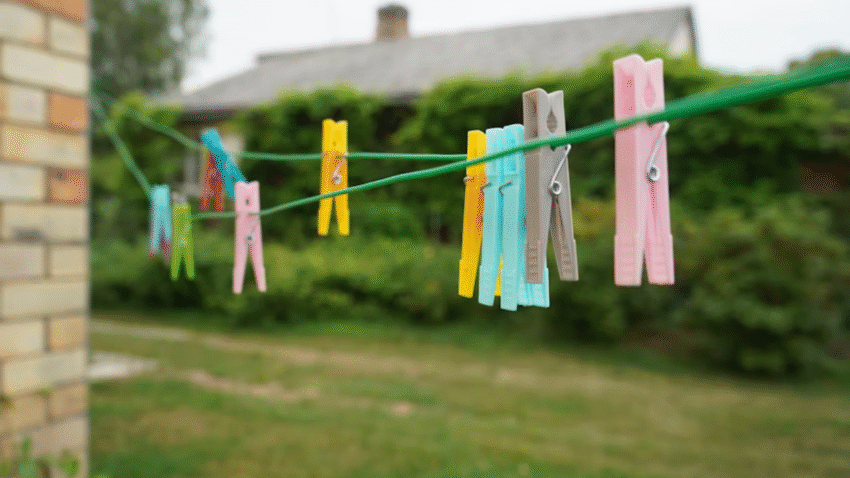Introduction
Your dryer might be one of the most used appliances in your home, but it can also be one of the most dangerous if not maintained properly. Lint buildup in the dryer vent is a leading cause of house fires, with thousands of incidents reported each year. The good news is, you can drastically reduce this risk with regular maintenance. This guide will show you how to clean the dryer vent to prevent fires—a simple, affordable task that can improve safety, efficiency, and energy savings.
Why Cleaning the Dryer Vent Matters
Dryers push hot, moist air and lint through a vent to the outside. Over time, lint accumulates inside the vent, creating a dangerous fire hazard.
Benefits of cleaning your dryer vent include:
- Fire Prevention: Lint is highly flammable and can ignite from the dryer’s heat.
- Better Efficiency: A clean vent allows hot air to flow freely, drying clothes faster.
- Lower Energy Bills: Faster drying times mean less electricity or gas used.
- Extended Appliance Life: Less strain on the dryer motor and heating element.
- Reduced Wear on Clothing: Shorter drying cycles prevent fabric damage.
If you’ve noticed longer drying times, clothes that feel unusually hot, or a burning smell when the dryer is running, your vent may already be clogged.
Step-by-Step Guide to Cleaning a Dryer Vent to Prevent Fires
1. Gather Your Supplies
You’ll need:
- Dryer vent cleaning brush or kit
- Screwdriver (Phillips or flathead depending on your dryer)
- Vacuum cleaner with hose attachment
- Microfiber cloth
- Duct tape (optional for re-sealing vent connections)
2. Unplug the Dryer and Turn Off the Gas Supply (if applicable)
Safety comes first. Before you start:
- Unplug the dryer from the wall outlet.
- If you have a gas dryer, turn off the gas supply to avoid leaks.
3. Pull the Dryer Away from the Wall
Move the dryer out enough to access the vent duct. Be careful not to stretch or damage the flexible hose.
4. Disconnect the Dryer Duct
Use a screwdriver to loosen the clamp securing the vent hose to the dryer. Gently remove the hose from the dryer’s exhaust port.
5. Clean the Vent Hose
If the hose is short and easy to remove, take it outside and shake out loose lint.
- Insert a dryer vent cleaning brush into the hose and push through to loosen buildup.
- Use a vacuum hose attachment to suck out remaining lint.
- If the hose is damaged or crushed, replace it with a rigid or semi-rigid metal duct for better safety.
6. Clean the Wall or Floor Vent Connection
Lint often collects where the hose connects to the wall or floor vent.
- Use the cleaning brush to loosen lint.
- Vacuum the area thoroughly.
7. Clean the Exterior Vent
Locate the vent exit outside your home. Remove any cover or flap.
- Use the vent brush to push out lint from the inside toward the outside.
- Vacuum remaining debris.
- Make sure the flap or cover moves freely and isn’t blocked by leaves, nests, or debris.
8. Clean Behind and Under the Dryer
While the dryer is pulled out, vacuum lint and dust from the floor, walls, and back of the dryer. Lint that escapes the vent can collect in these areas and pose a fire risk.
9. Reconnect the Vent and Push the Dryer Back
Once everything is clean:
- Reattach the vent hose to the dryer and wall vent.
- Tighten the clamp securely.
- Push the dryer back into place, making sure the hose isn’t kinked or crushed.
10. Plug the Dryer Back In and Test
Restore power (and gas if applicable), then run the dryer on an air-dry or fluff setting for a few minutes. Check outside to ensure air is flowing freely through the vent.
Common Mistakes to Avoid
- Using Plastic or Foil Ducts
- Mistake: These materials can sag, trap lint, and melt in high heat.
- Solution: Use rigid or semi-rigid metal ducts for safety.
- Only Cleaning the Lint Trap
- Mistake: While important, the lint trap doesn’t catch all lint.
- Solution: Clean the entire vent system at least once a year.
- Neglecting the Exterior Vent
- Mistake: Lint and debris at the outside vent can block airflow.
- Solution: Always check and clean the exterior opening.
- Forgetting to Turn Off Gas Supply
- Mistake: Working on a gas dryer without shutting off gas can be dangerous.
- Solution: Always turn off the supply before starting.
- Not Checking for Damage
- Mistake: Reattaching a damaged or crushed vent hose reduces efficiency.
- Solution: Replace any damaged sections before reconnecting.
Extra Laundry Tips & Hacks
- Monthly Quick Clean: Remove the lint screen and vacuum the lint trap opening.
- Lint Screen Wash: Every few months, wash the lint screen with warm, soapy water to remove fabric softener residue that can block airflow.
- Dryer Sheet Alternatives: Consider using wool dryer balls to reduce lint and static without adding residue.
For more appliance maintenance ideas, check out our “How to Remove Bad Odors from a Washing Machine” guide.
Conclusion
Learning how to clean the dryer vent to prevent fires is one of the simplest and most effective ways to protect your home. With just a few tools and about an hour of your time, you can reduce fire risks, improve your dryer’s efficiency, and lower your energy bills.
Pro Tip: Mark your calendar to clean your dryer vent at least once a year—or more often if you do a lot of laundry.
Bookmark this guide so you can keep your dryer safe and running efficiently for years to come.
